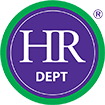In May 2019 a plastering contractor was fined £2,000 plus prosecution costs of £935.60 after a self-employed worker fell from a first-floor landing.
His plasterer had been helping a labourer move plaster boards from ground level to the first floor, when he fell 2.4m. This accident cost him three weeks in hospital where he recovered from fractures to his wrists, ribs, eye sockets, skull and nose. The work had not been properly planned, managed or monitored.
The HSE’s 2018 national statistics on health and safety at work tell us that in 2017/18, 8% of non-fatal injuries to employees involved falling from a height. Such incidents, therefore, are more common than they ought to be.
Disturbingly, falling from height is also the leading cause of fatal accidents for workers, with 50 of the 144 fatalities (35%) in 2017/18. For context, the next highest risk is being struck by a moving vehicle, which accounted for 37 (26%) of the fatalities.
Work at Height Regulations (2005)
Normally, you’ll be aware if you or your staff are working at height. But sometimes the risk may not be so obvious, for instance if it is occasional or the height does not seem significant. The Work at Height Regulations (2005) govern this area of health and safety. And if anyone in your business is at risk of a fall from height which could cause personal injury, it is important that you are familiar with the requirements.
Planning the work, and ensuring it is supervised and performed by competent people is where good practice starts. It will guide you in taking the most appropriate approach and in selecting the right equipment to use.
Planning for working at height
The only way to guarantee the prevention of a height-related accident is to eliminate the need to work at height. So the first thing your planning process will do is seek ways for the work to be done on the ground, if possible.
But if you’ve established that working at height cannot be avoided, you’ll next be looking to prevent falls. This may be achieved by using the right equipment. For example, the investigation into the plasterer’s accident cited earlier revealed that the contractor hadn’t identified the need for guard rails. These may have prevented the accident.
Working on, or near, fragile surfaces is a specific factor you should assess, if relevant, and take reasonable precautions.
If you cannot prevent the risk of falls, the next step is to minimise the consequences of the fall and its distance. Again, equipment may come into play, or the approach that you adopt for carrying out the work. All equipment you use for working at height should be regularly maintained and checked. It should be suitable, stable and strong enough for the job.
Managing people working at height
While you as an employer have legal responsibilities, your workers also have a legal duty to take reasonable care of themselves and others too. It is their responsibility to cooperate with you and each other to ensure that the health and safety measures are followed. Your management skills may be called upon to ensure this happens.
So what kind of safety measures may apply directly to your staff? If required, you’ll want to make sure they wear the right personal protection equipment – for some jobs perhaps helmets and steel toe cap boots to provide protection from falling objects.
It may be helpful to provide training on how to properly lift, move and reach for objects at a height. In practice the temptation to save time by overloading and overreaching may seem efficient, but these habits create unnecessary risk.
For further support with working at heights
Working at height is a major risk in the UK workplace. Whether working at height is a familiar risk to you but you want to bring in better processes, or you are encountering a new working-with-heights challenge, our experts can support you to keep your team safe and you legally compliant. Call us today to find out how we can help.


